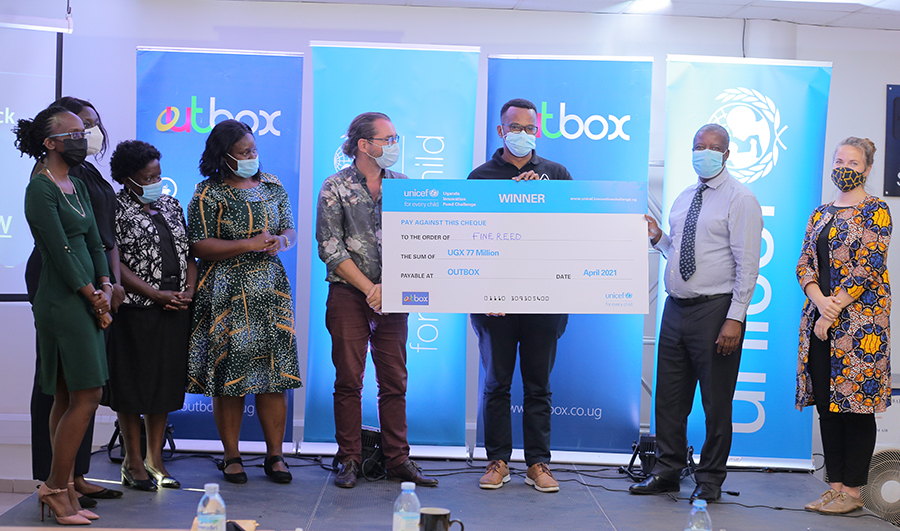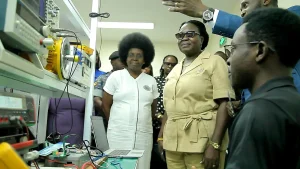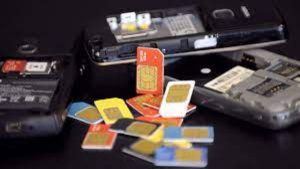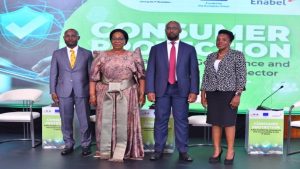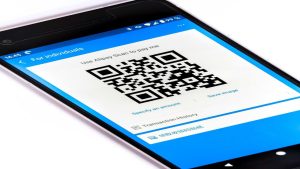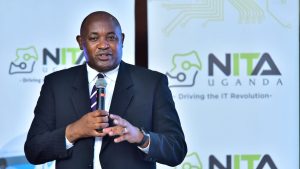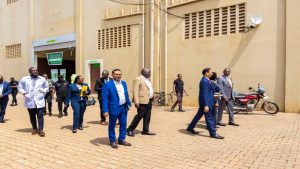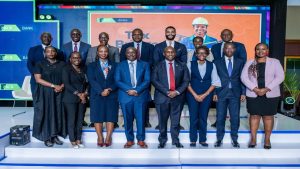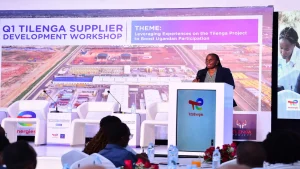Share
“ICT services in Uganda grew at an exceptional average growth rate of 14.8% over the period under review (2014/15 to 2019/20),” according to Dr. Chris Baryomunsi, the Minister for ICT and National Guidance. He said that they have been using ICT for services such as e-education, e-procurement, e-security, e-governance, and e-Health.
The NRM Manifesto 2021-26, according to Baryomunsi, emphasizes three key areas for the ICT sector: expand ICT network coverage and penetration; encourage ICT use; and improve digital skills and innovation. “In FY 2021/22, the ICT industry contributed 2.0% of the total nominal GDP. According to him, the nominal value added in the ICT sector increased from Sh2.79 trillion in FY 2019/20 to Sh2.93 trillion in FY 2020/21.

“The total expected formal ICT imports bill for the fiscal year 2020–21 increased by 0.3% to $256.27 million from $255.54 million in the previous fiscal year.
Information and communication services accounted for 91.7% of the entire revenue generated by the ICT sector, according to Baryomunsi. “ICT sector revenue collections increased by 19% to sh2.245 trillion in the FY2020/21 from sh1.819 trillion in the FY 2019/20,” he added.
According to him, Uganda’s government-technology maturity index value (GTMI), which evaluates the essential elements of four Gov-Tech target areas, including mainstreaming public involvement, improving service delivery, and supporting core government systems, increased from 0.639 in 2020 to 0.858 in 2022.
In addition, according to the Gov-Tech Leaders Report (World Bank Maturity Index, 2022) Uganda’s position has risen from Group B to Group A. based on Baryomunsi.
He said mobile subscriptions have increased from 22.37 million in 2016, to 31.26 million in 2022. Internet subscription has also grown from 8.04 million in 2016 to 23.77 million in 2022.
Telecommunications services alone, Baryomunsi said, represented 83.6% of total ICT sector revenue.
TELE-DENSITY
Other achievements he highlighted included Increase in tele-density from 61.2% In 2016 to 72.6% in 2022, increase in mobile money subscriptions from 19.63 million in 2016 to 22.52 million in 2020, Increase in the Internet penetration is expected to climb from 25.03% in 2016 to 55% in 2022, while the number of pay TV subscribers will rise from 777,588 in 2016 to 1,616,660 in 2020.
According to Baryomunsi, there will be 48 functioning local TV stations in 2023 compared to 17 in 2016. Moreover, while 4G internet availability is only at 47% of the population, 3G internet coverage is currently at 89%.
He claimed that the National Development Plan III (NDP III) has been substantially aided in implementation by his ministry.
Among the major initiatives the ministry has carried out under NDP III, according to Baryomunsi, are the Digital Transformation Programme, Community Mobilization and Mindset Change, Public Sector Transformation, and Regional Balanced Development.”80% of the country has mobile cellular geographic signal coverage. This results in a 72% coverage of the population for basic voice, he said.
Over 700,000 Ugandans now have access to broadband services thanks to the upgrade of 25 broadband sites from 20 to 3G, according to Baryomunsi.
Additionally, free internet hotspots have been installed at nine border crossings, including Lwakhakha, Mpondwe, Mutukula, Busia, Bunagana, and Vurra, Malaba, Katuna, and Elegu. In terms of ICT infrastructure development, Baryomunsi said a total of about 4,172km of NBI fiber optic cable were laid across 58 districts; 1,447 Government sites (MDAS and LGs) connected to NBI, 281 Police stations and nine UPDF sites connected to the NBI, NBI extended to Pakwach, Nebbi, Arua, Koboko, Yumbe, Moyo, Adjumani, Katakwi and Moroto, border posts of Mpondwe. Connected to the NBI and alternate marine cable routes by Vurra, Oraba, and Elegu/Nimule.

The Recovery Site, which provides centralized hosting, disaster recovery, and other data center services for government applications and data, was established and is completely furnished with contemporary technology.
The National Data Centre now hosts 199 apps for 66 entities, while the general public has access to free Wi-Fi (called “MyUg”) in 580 sites. The MYUG platform has Mutukula, Katuna, and more than two million Busia and Malaba users per month, all of whom are located in Kampala’s Central Business District and through Entebbe.

According to a National Data Baryomunsi, 89% of the population had access to mobile centers and networks (3G or above in the event of a disaster) by the end of FY 2020/21.Using testing for internet connectivity, he added In addition, the period under review saw the validation of SIM Card Registration with National ID data completed in the tourist areas of Bwindi and Kidepo Valley National Parks.
At least 71% of government services, according to Baryomunsi, are provided electronically through corporate websites, email, social media, SMS, and mobile applications.
Moreover, “the online service index increased from 50% in 2016 to 58.24% in 2020 and that 330 National ICT systems and databases in government were implemented, up from 47 in 2015.
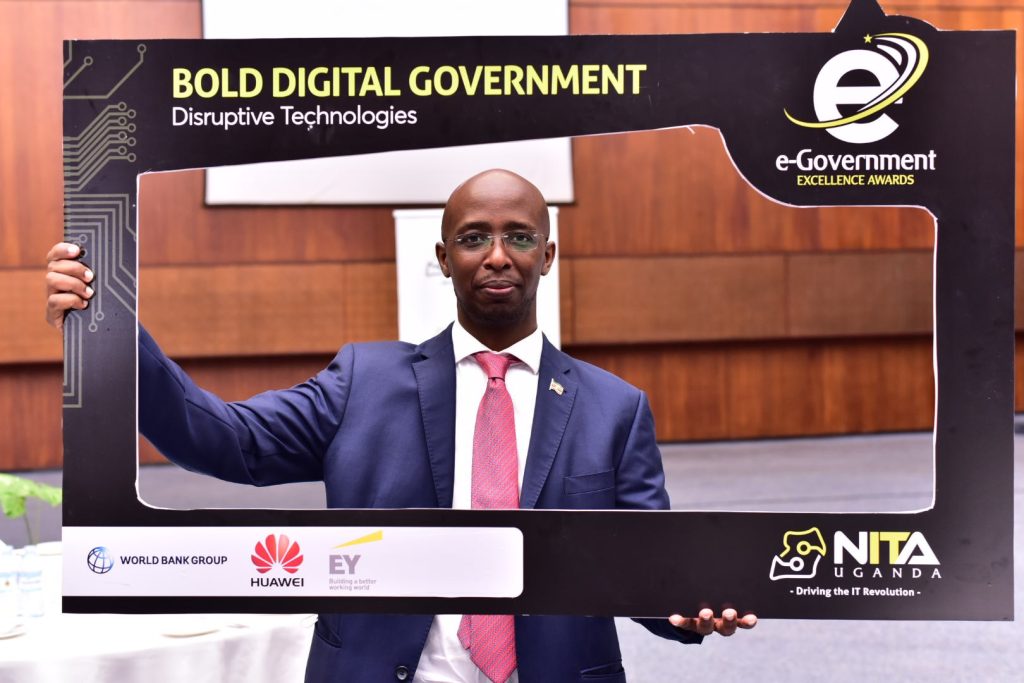
INNOVATIONS IN DIGITAL
According to Baryomuns, the ministry is now encouraging ICT innovation to generate employment, to replace imports, and to prevent becoming overly reliant on imports of ICT products.
In this regard, he stated that a National ICT Innovation Hub for 500 innovators has been built in Nakawa, that the National ICT Initiatives Support Program (APNIISP) has awarded grants for innovation to 132 innovators and six private sector innovation hubs, and that locally developed e-Government systems, such as the e-Procurement system, Parish Model Management Information System, Government Asset Management System, Education Management Information System, and ElBaryomunsi listed three regional ICT innovation clusters at the universities of Kabale, Soroti, and Muni as further achievements. He continued by saying that they also formed alliances with Wits University, Makerere University, and other regional private innovation clusters.
